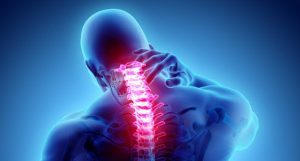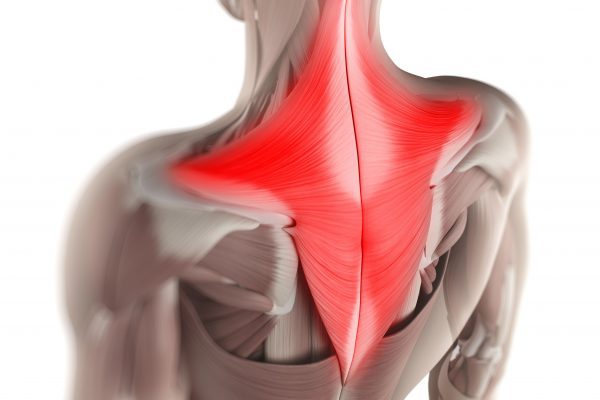If someone has a pain in his hand […] one does not comfort the hand, but the sufferer. – Philosopher Ludwig Wittgenstein, 1953
What is pain? It might seem like an easy question. The answer, however, depends on who you ask.
In some ways, pain is the body’s way of telling you something is damaged, but this is not always the case. There are many instances in which an individual may experience a traumatic injury, and feel no pain at all, or, at least not a pain that you would attribute to the traumatic nature of their injury. On the other hand, you can also get individuals who experience phantom limb pain. This is experienced when pain is felt in a body part that is no longer there .
Pain scientists have a range of theories surrounding the pain but are reasonably agreed that it involves an unpleasant feeling in our body that makes us want to stop and change our behaviour. We no longer think of pain as a measure of tissue damage – it does not actually work that way even in highly controlled experiments. We now mainly think of pain as a complex and highly sophisticated protective mechanism.

How does pain work?
It is pain that tells us not to do things – for example, not to lift with an injured hand, or not to walk with an injured foot. It is pain, too, that tells us to do things – see a physio, visit a GP, sit still and rest.
Our body contains specialised nerves that detect potentially dangerous changes in temperature, chemical balance or pressure. These “danger detectors” (or “nociceptors”) send alerts to the brain, and the brain then makes an educated guess regarding which part of the body is in danger and produces the pain there.
The brain produces pain. Pain is not actually coming from the wrist you broke, or the ankle you sprained. We now know that pain can be “turned on” or “turned up” by anything that provides the brain with credible evidence that the body is in danger and needs protecting.
Where in the body the brain produces the pain is a “best guess scenario”, based on all the incoming data and stored information. This can include “danger data” from the danger detection system. The brain also utilises other aspects to help inform the signals it sends. For example, cognitive data such as expectations, previous exposure or experiences, cultural and social norms and beliefs, and other sensory data such as what you see, hear and otherwise sense will facilitate your brains decisions.
Usually the brain gets it right, but sometimes it does not. For example, you may feel pain in your leg when it is your back that might need the protecting.
All in your head?
Although pain comes from the brain, it isn’t all in your head. Your “danger detectors” are distributed across your body’s tissues and act as the eyes of the brain. When there is a sudden change in tissue environment – for example, it heats up, gets acidic (cyclists, imagine the lactic acid burn at the end of a sprint), is squashed, squeezed, pulled or pinched – these danger detectors are our first line of defence. Danger messages travel to the brain and are highly processed along the way, with the brain itself taking part in the processing. The danger transmission neurones that run up the spinal cord to the brain are under real-time control from the brain, increasing and decreasing their sensitivity according to what the brain suggests would be helpful.
So, if the brain’s evaluation of all available information leads it to conclude that things are truly dangerous, then the danger transmission system becomes more sensitive (called descending facilitation). It can then mobilise inflammatory mechanisms that increase blood flow and cause the release of healing molecules from nearby tissue, thus triggering the repair process. Inflammation, however, can render your danger detectors more sensitive, so they respond to situations that are not actually dangerous. For example, when you move an inflamed joint, it hurts a long way before the tissues of the joint are stressed.
If the brain concludes things are not truly dangerous, then the danger transmission system becomes less sensitive (called descending inhibition). It is important to note however, local anaesthetic or certain medications can render these danger detectors useless, so danger messages are not triggered. As such, we can be pain-free despite major tissue trauma, such as being cut into for an operation.
Danger evaluation in the brain is mindbogglingly complex and the decision that the brain makes has a big impact on what you might feel. Many brain regions are involved, some more commonly that others, but the exact mix of brain regions varies between individuals and, in fact, between moments within individuals. To understand how pain emerges into consciousness requires us to understand how consciousness itself emerges, and that is proving to be very tricky.
To understand how pain works in real-life people with real-life pain, we can apply a reasonably easy principle: Any credible evidence that the body is in danger and protective behaviour would be helpful will increase the likelihood and intensity of pain. Any credible evidence that the body is safe will decrease the likelihood and intensity of pain. It is a simple yet difficult concept.

Implications
To reduce pain, we need to reduce credible evidence of danger and increase credible evidence of safety. Danger detectors can be turned off by local anaesthetic, and we can also stimulate the body’s own danger-reduction pathways and mechanisms. This can be done by anything that is associated with safety – most obviously accurate understanding of how pain really works, exercise, active coping strategies, safe people and places.
A very effective way to reduce pain is to make something else seem more important to the brain – this is called distraction. Only being unconscious or dead provide greater pain relief than distraction.
In chronic pain the sensitivity of the hardware (the biological structures) increases so the relationship between pain and the true need for protection becomes distorted; we become over-protected by pain.
This is one significant reason there is no quick fix for nearly all persistent pains. Recovery requires a journey of patience, persistence, courage and good coaching. The best interventions focus on slowly training our body and brain to be less protective.
To make an appointment with one of our physiotherapists, give one of our friendly team a call on 4724 0768 or click HERE to book online!


